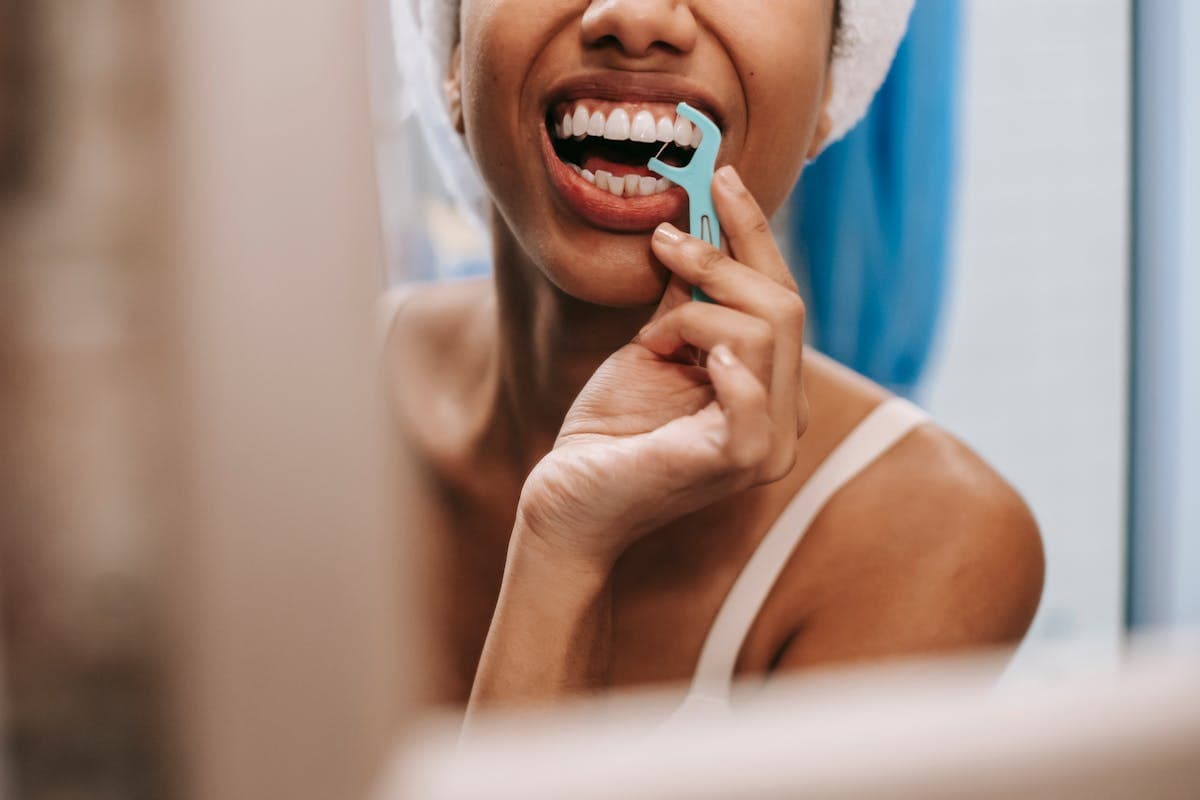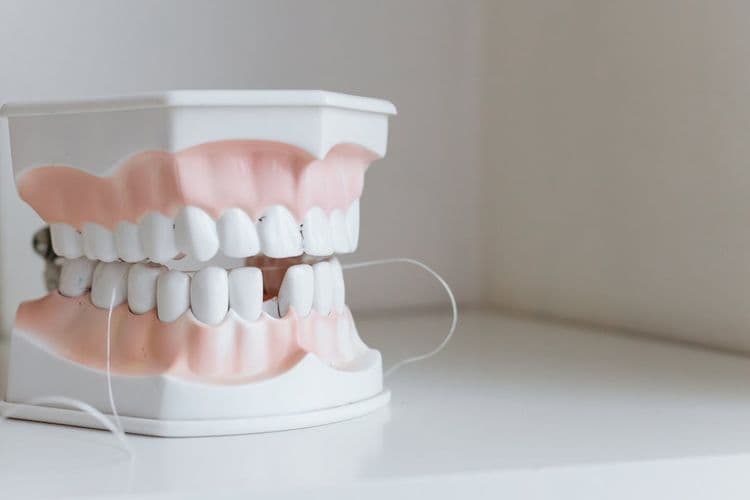The debate on whether flossing should precede or follow brushing continues to intrigue dental professionals and patients alike. Scientific evidence suggests that flossing before brushing may enhance plaque removal and fluoride absorption. However, brushing first also has supporters who argue for its effectiveness in loosening debris. Understanding the nuanced benefits of each method can greatly impact oral health outcomes, prompting individuals to evaluate and possibly refine their personal oral hygiene routines.
Understanding the Importance of Flossing
Flossing is a critical component of oral hygiene that greatly contributes to the prevention of dental diseases. Research indicates that effective flossing techniques are instrumental in removing interdental plaque and food particles, which are not accessible by brushing alone. The mechanical action of flossing disrupts bacterial colonies, known as biofilms, that contribute to gingivitis and periodontal disease. Several studies highlight the correlation between regular flossing and improved oral health outcomes, including reduced incidence of cavities and gum inflammation. Proper flossing techniques, such as using a gentle sawing motion and ensuring the floss curves around each tooth, are essential for maximizing dental benefits. Consequently, flossing is an indispensable practice in maintaining ideal oral health and preventing common dental pathologies.
The Case for Flossing Before Brushing
Emerging evidence suggests that flossing before brushing may enhance oral hygiene by improving plaque removal efficiency. By dislodging food particles and plaque from between the teeth, flossing allows for a more thorough cleaning when followed by brushing, potentially resulting in better fluoride absorption on freshly exposed tooth surfaces. This sequential approach may consequently optimize the protective benefits of fluoride toothpaste, contributing to overall dental health.
Plaque Removal Efficiency
How effectively does the sequence of oral hygiene practices impact plaque removal? Scientific studies have examined the impact of flossing before brushing on plaque accumulation and removal techniques. Flossing prior to brushing may enhance plaque removal efficiency by dislodging food particles and bacteria residing between teeth, areas often inaccessible to toothbrush bristles. This sequence allows subsequent brushing to more effectively clear away the loosened debris and biofilm, reducing plaque accumulation. Evidence indicates that this method may offer superior plaque control, compared to brushing followed by flossing. Controlled trials highlight that individuals who adopt flossing before brushing demonstrate lower levels of plaque and gingivitis. Such findings suggest that the floss-first approach may optimize oral hygiene practices by targeting areas prone to plaque buildup.
Fluoride Absorption Enhancement
Although the sequence of oral hygiene practices is often debated, evidence suggests that flossing before brushing may enhance fluoride absorption. When plaque and food particles are removed through flossing, the tooth surface is more exposed, allowing fluoride to better penetrate the enamel. This sequence potentially maximizes fluoride benefits, contributing to more effective enamel protection. Research indicates that the fluoride present in toothpaste can more easily access and remineralize the enamel once the interdental spaces are cleared of debris. Enhanced fluoride absorption can lead to a reduction in dental caries and improved overall oral health. Consequently, adopting a routine of flossing prior to brushing may optimize the protective effects of fluoride, supporting a strategic approach to oral hygiene and dental care.
Benefits of Brushing Before Flossing
Numerous studies suggest that brushing before flossing may enhance oral health by optimizing plaque removal. This sequence allows individuals to employ effective brushing techniques, ensuring that the toothbrush bristles reach all surfaces and dislodge plaque from the teeth and gum line. By addressing plaque first, brushing prepares the oral cavity for subsequent flossing, which can then target and remove debris from interdental spaces more efficiently. This method is integral to maintaining robust oral hygiene and minimizing the risk of periodontal diseases.
The scientific consensus indicates that brushing first may also facilitate the distribution of fluoride across the teeth’s surfaces, thanks to the thorough removal of initial plaque layers. Consequently, this approach may amplify the overall benefits of both brushing and flossing within a thorough oral care regimen.
Insights From Dental Professionals
Dental professionals emphasize the significance of expert opinions in optimizing oral hygiene routines. Research indicates that the sequence of flossing and brushing can influence the effectiveness of plaque removal, underscoring the importance of flossing order. Consequently, professionals recommend best practices that align with current evidence to enhance dental health outcomes.
Expert Opinions Matter
How do expert opinions shape our understanding of oral health practices? Dental professionals play a pivotal role in guiding public perceptions and behaviors related to dental hygiene and oral care. Through rigorous scientific research and clinical experience, they provide evidence-based recommendations that enhance oral health outcomes. Their insights are critical in educating the public about effective practices, such as the timing of flossing in relation to brushing. By evaluating clinical studies and patient outcomes, dental experts can offer recommendations that maximize plaque removal and prevent periodontal disease. Consequently, expert opinions not only inform individual behaviors but also influence broader public health guidelines. This professional guidance guarantees that oral care practices are grounded in current scientific understanding, promoting ideal dental health for individuals and communities.
Flossing Order Importance
Why does the sequence of flossing and brushing matter in oral hygiene? Dental professionals agree that the order can impact the effectiveness of oral care routines. A significant body of research emphasizes that flossing before brushing may enhance oral hygiene. This sequence allows flossing techniques to dislodge food particles and plaque from between teeth, which brushing then effectively removes. Studies suggest that brushing post-flossing guarantees fluoride from toothpaste reaches interdental spaces, enhancing the protective barrier against cavities. The evidence underscores that employing correct flossing techniques first maximizes the subsequent brushing process, maximizing the overall cleanliness of the oral cavity. As a result, the sequence of these actions plays an essential role in maintaining ideal oral health, as endorsed by dental experts.

Best Practices Suggested
In working for ideal oral health, incorporating best practices as recommended by dental professionals is essential. Evidence suggests that effective flossing techniques are integral to maintaining optimal oral hygiene. Dental experts recommend flossing prior to brushing as it helps dislodge food particles and disrupts bacterial biofilm between teeth, allowing fluoride from toothpaste to penetrate more effectively. Proper technique involves gently sliding the floss between teeth, forming a C-shape around each tooth to clean beneath the gumline. Consistent daily flossing minimizes plaque accumulation, reducing the risk of periodontal disease and cavities. Emphasizing the sequence and technique of flossing within a thorough oral hygiene routine can considerably enhance dental health outcomes, as supported by scientific literature and clinical observations.
The Role of Personal Preference and Habit
Personal preference and habit play a significant role in the daily oral hygiene practices of individuals, influencing their choices in flossing and brushing routines. Research indicates that these personal routines are deeply ingrained, often established during early childhood. Flossing habits, in particular, can vary widely among individuals, shaped by personal comfort, perceived effectiveness, and even cultural factors. Some may prefer to floss before brushing, believing it enhances the subsequent brushing effectiveness, while others find flossing after brushing to be more beneficial. Additionally, the repetitive nature of these choices reinforces them, making alterations to established routines challenging. Understanding these ingrained habits can help dental professionals tailor advice and improve adherence to ideal oral hygiene practices, ultimately promoting better oral health outcomes.
How Plaque and Debris Affect Oral Health
Although often overlooked, the accumulation of plaque and debris plays a crucial role in the deterioration of oral health. Plaque formation begins when oral bacteria interact with food particles, creating a biofilm that adheres to tooth surfaces. This biofilm acts as a matrix where bacteria thrive, producing acids as metabolic byproducts. Over time, these acids demineralize the enamel, leading to cavities. Furthermore, the sustained presence of plaque fosters gum inflammation, initiating gingivitis, and potentially progressing to periodontitis if untreated. Scientific studies underscore that effective removal of plaque is essential in preventing these conditions. Regular oral hygiene practices, including flossing and brushing, are critical in disrupting plaque formation and minimizing bacterial load, thereby maintaining peak oral health and preventing disease progression.
Choosing the Right Tools for Flossing
Selecting appropriate tools for flossing is paramount in optimizing oral hygiene. Studies indicate that the effectiveness of flossing is greatly influenced by the choice of flossing tools and tool materials. Dental floss, available in various materials such as nylon or PTFE, is widely endorsed due to its ability to effectively remove interproximal plaque. Nylon floss, though economical, may fray or break, whereas PTFE floss is more durable but costlier. Additionally, floss picks and interdental brushes serve as alternative flossing tools, offering convenience for those with limited dexterity. The selection should be tailored to individual dental anatomy and preferences, ensuring the tool is comfortable and easy to use. Ultimately, the right choice enhances plaque removal efficacy and contributes to overall oral health.
Tips for Effective Flossing and Brushing
How can one guarantee the most effective flossing and brushing routine? Adhering to scientifically validated flossing techniques and brushing methods is essential. Research suggests that proper flossing involves using an 18-inch piece of floss, gently sliding it between teeth, and forming a C-shape to clean around each tooth. Employing this technique can reduce plaque accumulation and prevent gum disease. Regarding brushing methods, the American Dental Association recommends using a soft-bristled toothbrush, employing short back-and-forth strokes, and angling the brush at a 45-degree angle to the gum line. This technique effectively removes plaque and debris without causing enamel wear. Consistency and precision in both flossing and brushing are vital for ideal oral health outcomes, underscoring the importance of technique over mere frequency.
Personalized Oral Hygiene Recommendations
In recent years, personalized oral hygiene recommendations have gained traction, reflecting a shift towards individualized dental care tailored to specific needs and conditions. This approach emphasizes the importance of personalized routines that consider factors such as age, dental history, and specific oral health issues. Evidence suggests that individualized techniques, such as custom flossing and brushing methods, can greatly improve oral health outcomes. Dental professionals are now utilizing advanced diagnostic tools to develop personalized strategies that address unique oral environments. For instance, patients with periodontal disease may benefit from targeted interdental cleaning techniques, while those with orthodontic appliances might require specialized brushing tools. This evidence-based, patient-centered approach aims to optimize oral hygiene practices, ultimately enhancing overall dental health and patient satisfaction.
Frequently Asked Questions
Does Flossing Help With Bad Breath?
Flossing techniques are essential for removing food particles and plaque that contribute to bad breath. Evidence suggests that regular flossing enhances breath freshness by reducing bacterial buildup between teeth, which is often a primary cause of halitosis.
Can Flossing Prevent Gum Disease?
Flossing benefits in preventing gum disease are well-documented. By removing plaque and food particles from between teeth, flossing reduces the risk of inflammation and infection, thereby greatly lowering the incidence of periodontal disease according to numerous studies.
Is Water Flossing as Effective as Traditional Flossing?
Studies evaluating water flosser effectiveness versus traditional floss comparison indicate that water flossers can be as effective in reducing plaque and gingivitis. However, traditional floss remains superior for removing debris between tight spaces where water flossers may struggle.
How Often Should I Replace My Toothbrush?
The recommended toothbrush lifespan is approximately three to four months, contingent on bristle wear. Scientific studies suggest that worn bristles reduce cleaning efficacy and may harbor bacteria, necessitating regular replacement for ideal oral hygiene.
Are There Any Alternatives to Traditional Floss?
Research indicates alternatives to traditional floss, such as dental picks and interdental brushes, effectively remove plaque and debris between teeth. These tools are recommended by dental professionals for individuals seeking ease and efficiency in their oral hygiene routine.


